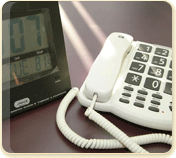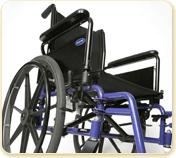 |
 |
Assistive Technology
A clear global trend is emerging to use “Assistive Technology” as the preferred term for the devices and systems that forms the core services of the ILCA.
The ILCA defines assistive technology as follows:
"Assistive Technology is a term for any device, system or design, whether acquired commercially or off the shelf, modified or customised, that allows an individual to perform a task that they would otherwise be unable to do, or increase the ease and safety with which a task can be performed."
The South Carolina Assistive Technology Program provides a detailed definition of Assistive Technology and the types of Assistive Technology available. Further information is available at http://www.sc.edu/scatp/what.htm.
- Aids for daily living: Devices that help in daily living and independence. Examples include modified eating utensils, adapted books, pencil holders, page turners, dressing aids, adapted personal hygiene aids.
- Augmentative communication: Devices that help people with speech and/or hearing disabilities communicate: communication boards, speech synthesisers, and modified typewriters, head pointers, text to voice software.
- Mobility aids: Devices that help people move within their environments: electric or manual wheelchairs, modifications of vehicles for travel, scooters, crutches, canes and walkers.
- Seating and positioning: Adapted seating, cushions, standing tables, positioning belts, braces, cushions and wedges that provide body support to help people perform a range of daily tasks.
- Computer access aids: Headsticks, ight pointers, modified or alternate keyboards, switches activated by pressure, sound or voice, touch screens, special software, and voice to text software.
- Environmental controls: Electronic systems that help people control various appliances, switches for telephone, TV, or other appliances which are activated by pressure, eyebrows or breath.
- Home/Workplace modifications: Structural adaptations that remove or reduce physical barriers: ramps, lifts, bathroom changes, automatic door openers, expanded doorways.
- Prosthetics and orthotics: Replacement or augmentation of body parts with artificial limbs or other orthotic aids such as splits or braces.
- Sensory aids for vision/hearing impaired: Aids such as magnifiers, Braille and speech output devices, large print screens, hearing aids, visual alerting systems, telecommunication devices.
- Recreation: Devices to enable participation in sports, social, cultural events. Examples include audio description for movies, adaptive controls for video games, adaptive fishing rods, cuffs for grasping paddles or racquets, seating systems for boats.
